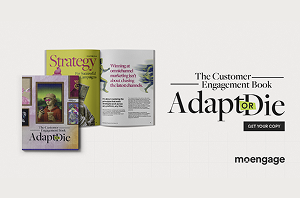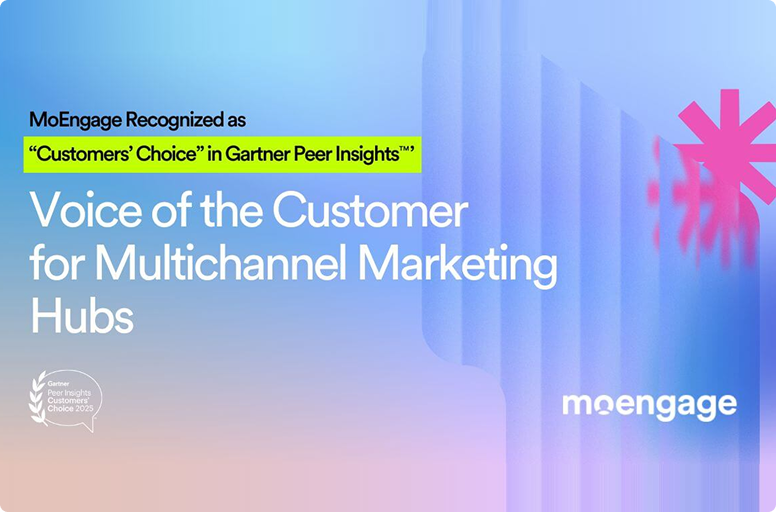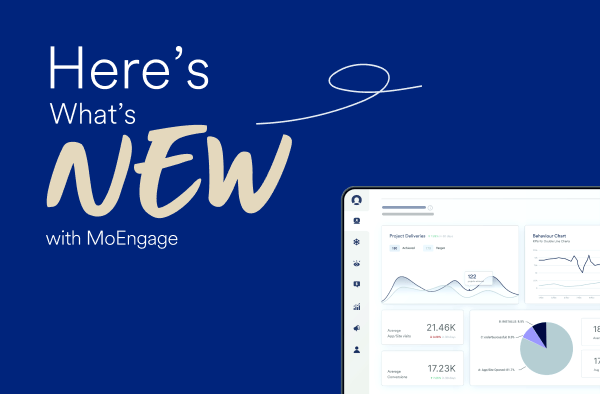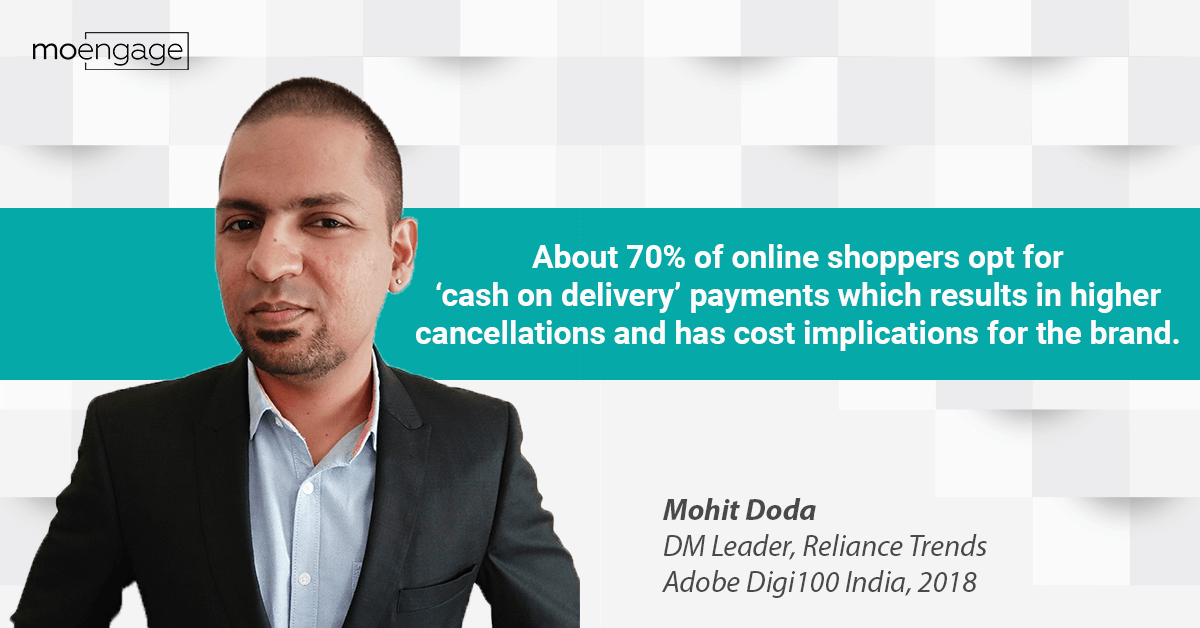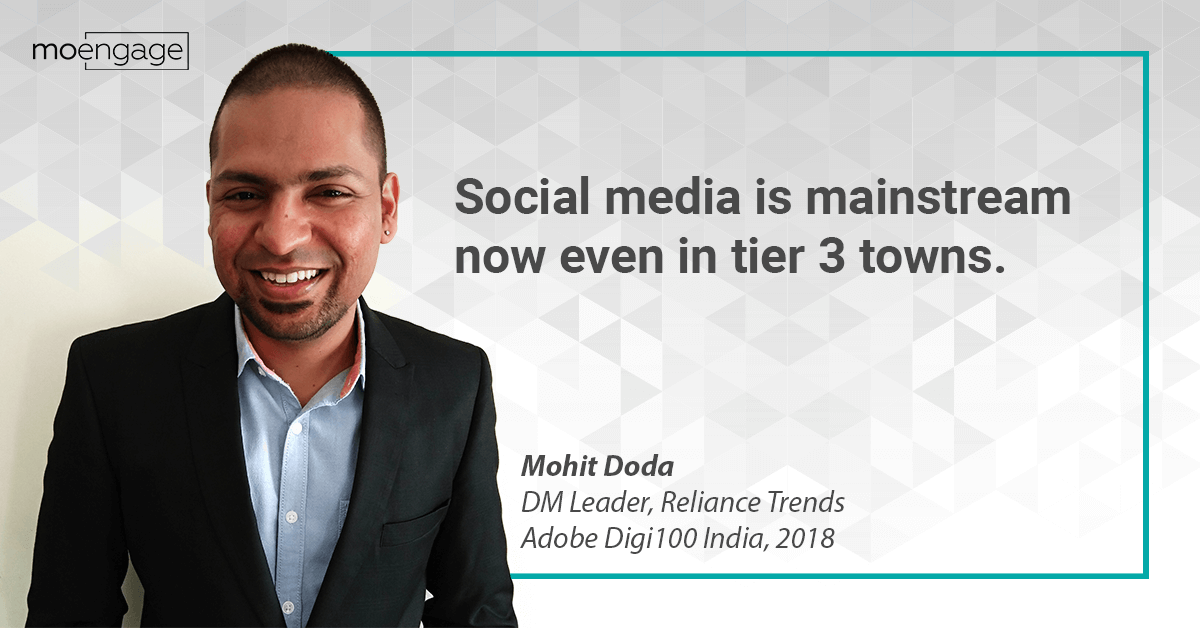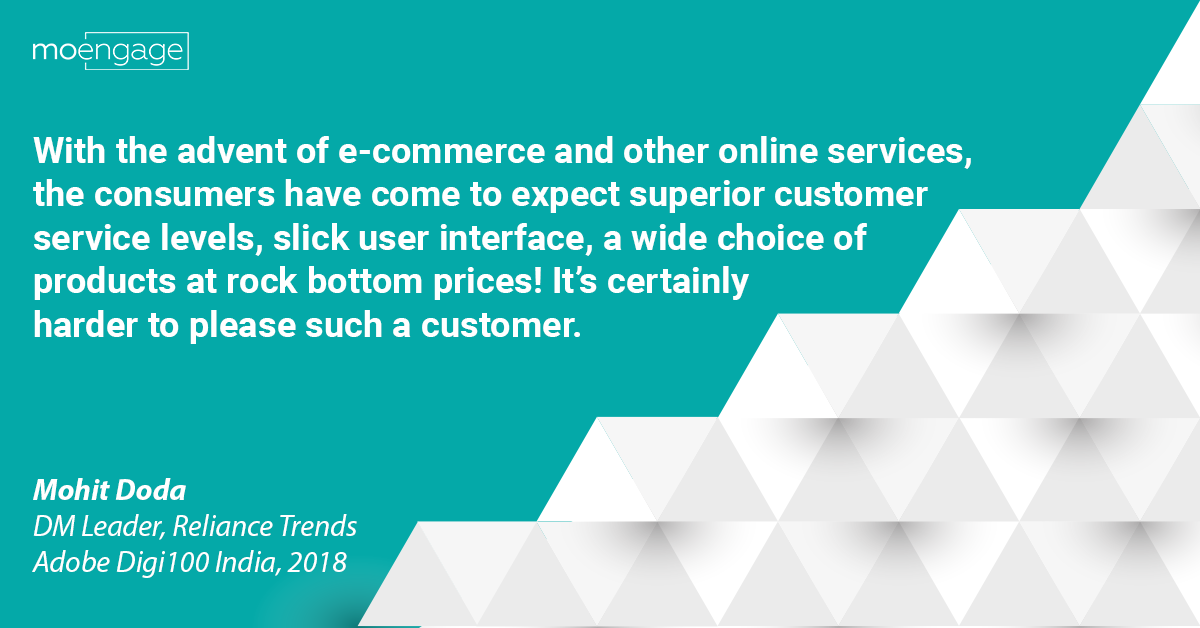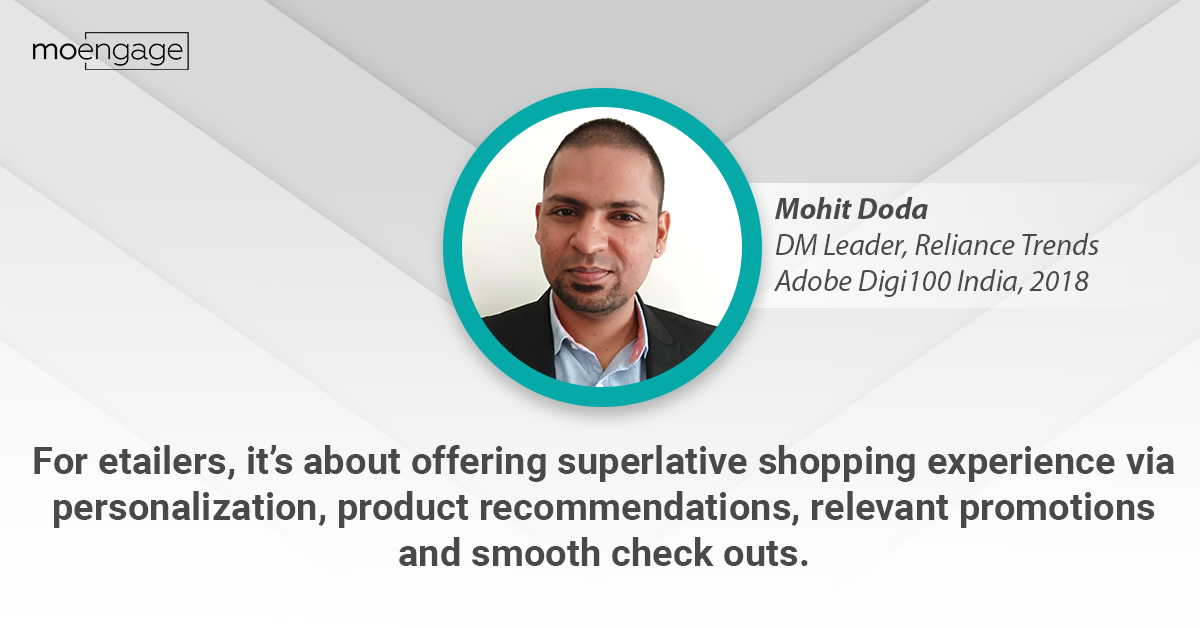Digital Customer Engagement in Retail With Mohit Doda [Marketer Spotlight]
![Digital Customer Engagement in Retail With Mohit Doda [Marketer Spotlight]](https://www.moengage.com/wp-content/uploads/2019/01/blog_05.png)
Reading Time: 6 minutes
Editor’s note: Marketer Spotlight is an initiative by MoEngage that covers the insights and opinions of marketing leaders and influencers. We’re excited to have Mohit Doda, Chief Manager of digital Marketing at Reliance Retail, share his perspective on marketing automation and customer engagement in the retail industry. Welcome to the Spotlight series, Mohit, and thank you for joining us for this interview blog.
About Mohit Doda: Team MoEngage, thank you for the invitation! I started my journey in Digital Marketing in 2006 when I joined Webchutney, one of the very few digital agencies in India. Later, I went on to work at multiple agencies for a couple of years before I decided to switch to the brand side. That’s exactly when the consumer internet space was getting hotter because of e-commerce startups! I think I was too curious to have deeper learnings in not just digital marketing but also working with interesting product and tech teams and the mar-tech space. Currently, I lead digital marketing for Reliance Trends, handling the brand’s social platforms and e-commerce marketing.
About Reliance Trends: Trends is India’s largest fashion destination, with a strong network of over 500 stores across 250 towns. It also houses more than 100 apparel & accessory brands along with 20 private brands across men, women, and children categories to fulfill every customer need. One can also shop online on Trends.Ajio, Ajio mobile app, or through in-store digital kiosks.
| Bonus Content
👉 Definitive Buyer’s Guide To Customer Engagement Platform [Download Ebook] 👉 Beginner’s Guide to Omnichannel Marketing for 2021 [Download Ebook] 👉 Customer Lifecycle Marketing Campaigns: An In-depth Guide for 2021 [Download Ebook] 👉 Customer Lifecycle Marketing Campaigns: An In-depth Guide for 2023 and Beyond [Read Blog] |
MoEngage: What are the key marketing challenges that retail brands face today?
Mohit: Well, the challenges are aplenty for brick-and-mortar stores and E-commerce stores. The offline retail industry has to work around obstacles such as the non-availability of good real estate, dwindling footfalls, and a lack of quality retail talent. For brick-and-mortar stores, the constant challenge is to draw shoppers into their stores and drive regular footfalls throughout the year. The challenge becomes bigger for stores with poor locations and for brands that are new. Of late, offline retail brands have also been saddled with price wars with e-commerce companies.
The e-commerce companies, on the other hand, are fighting challenges of their own. They struggle to turn profitable because of habitual sales and daily discounts. About 70% of online shoppers opt for ‘cash on delivery’ payments which results in higher cancellations and has cost implications for the brand. They also face low conversion rates on the website/app as the user experience may not be personalized or product discovery may not be intuitive.
How has retail marketing evolved in today’s digital landscape?
The digital landscape has evolved a lot in the last 10 years or so. Social media is mainstream now even in tier 3 towns in India. In tier 1 and tier 2 towns, digital is either bigger or equal to TV as a medium when it comes to the daily time spent by consumers. Retailers have realized that the consumer has changed with time and they need to pull up their socks, unlearn a lot, and learn the tricks of digital marketing.
Today, a brand needs to be where the customer is. Hence the sudden thrust on digital by almost all retailers, be it online or offline. We can see many traditional retailers also investing time and money on digital media. But very few get it right as digital isn’t limited to media. You need to have the right resources, tools, and analytics in place so as to make the most of the opportunities available. Having a presence on social media or creating a website or an app isn’t going to help if you aren’t measuring, improving, and aligning it with your brand objectives.
How has your target audience evolved over the years?
The target audience is much more evolved now with all the information available in their pocket. Their decision-making is methodical, supported by online research, price comparisons, and reviews. Search queries have become longer as people look for precise information. Their media consumption habits have been skewed across various online platforms and hence media planners need to learn more about their audience. With the advent of e-commerce and other online services, consumers have come to expect superior customer service levels, a slick user interface, a wide choice of products at rock bottom prices! It’s certainly harder to please such a customer. However, today brands have improved technology and targeting options at their disposal. They also have huge amounts of consumer data with them which was earlier not the case. This opens up unlimited opportunities and gives them a colossal advantage over competition that isn’t using this.
How can retail marketers engage users on their website or app?
Depending on the brand’s objective, there can be multiple ways to engage with the users. For e-tailers, it’s about offering superlative shopping experience via personalization, product recommendations, relevant promotions, and smooth checkouts. A brand website also helps the user in discovering the products while she starts the research online even if the sale happens in an offline store. Thus all the product-related content that’s available on the site becomes much more meaningful.
Since you cater to a diverse audience, how do you ensure that you are delivering the right message to the right user at the right time?
This is particularly easy in the digital world since the targeting options are much more sophisticated. The wastage is minimal as one can target based on gender, age, geography, interests, shopping/browsing history, affinity, profession, and other non-PII. This gets much better with mobile devices as marketers have access to richer data like handset make, live location, in-app behavior, and other signals.
What are the specific benefits of marketing automation in retail?
Automation can make marketing much more scalable and relevant to each consumer. Human beings can’t possibly tailor marketing messages for each customer because of the sheer size of the consumer pool that they are trying to reach. This is where automation can help. With automation, you can make sure that the marketing team is doing less mundane work and investing time in crafting more effective communication. Since each customer is at a different level of interaction with the brand, a ‘one-size-fits-all approach’ cannot work anymore. With the right marketing automation tool, you can make sure that you get higher open rates, better click-through rates, and improved conversions.
What is your advice to retail marketers who plan to implement marketing automation for their brand?
While marketing automation can provide you with the right set of tools and dashboards, marketers still need to come up with compelling content and design, to have an impact on their sales. So far, there is no tool that can supplant creativity and warmth. I recommend that while using marketing tools, they do a lot of A/B testing and analyze each campaign in detail.
What do you foresee as a key driver for retail marketing in 2019?
In 2019, marketers will take voice search seriously as the numbers soar significantly, going up to 40% of total searches (by 2019 end). Brands will continue to focus on SEO with a higher emphasis on optimization for mobile, conversational keywords (the way people perform voice searches, which tend to be longer), schema markup, and local SEO.
Thank you, Mohit! We’ve learned about the tenets of retail marketing and the role of personalization in today’s digital landscape. You’ve also helped us understand why marketers need to pay close attention to campaign performance and understand what’s working and what’s not as they explore digital tools and platforms to boost customer engagement. If you have any questions for Mohit, please share them in the comments section below.
Like this blog? Take a look at our previous Marketer Spotlight interview here.

